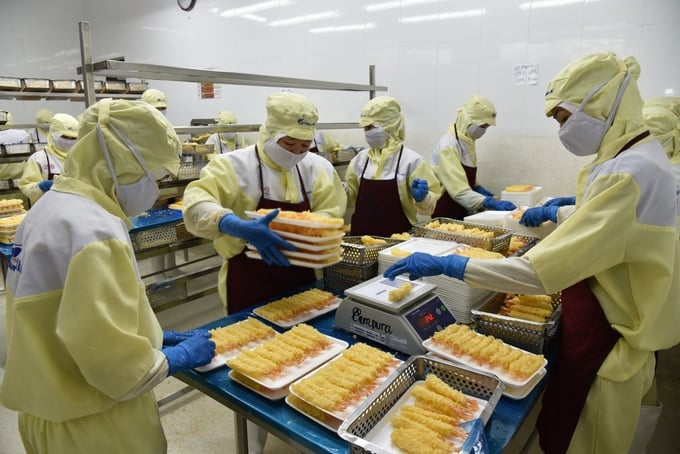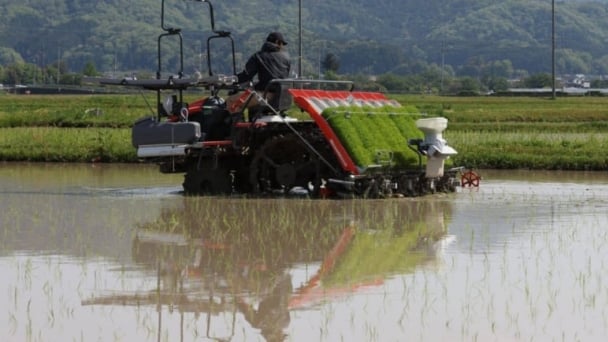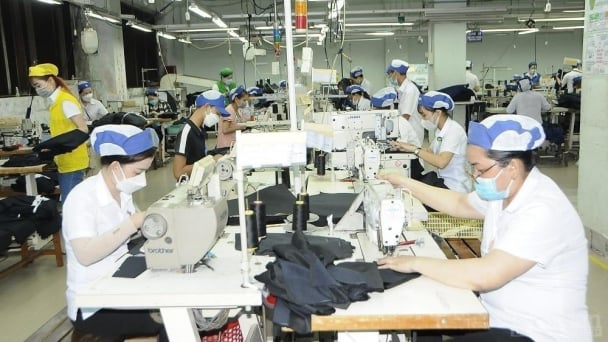May 16, 2025 | 09:48 GMT +7
May 16, 2025 | 09:48 GMT +7
Hotline: 0913.378.918
May 16, 2025 | 09:48 GMT +7
Hotline: 0913.378.918
According to the Vietnam Association of Seafood Exporters and Producers (VASEP), Vietnam’s total revenue from seafood export activities reached approximately 774.3 million USD in January 2025. This is an increase of 3.3% compared to the corresponding period in 2024. Consequently, these figures signal a promising outlook. Conversely, the Lunar New Year coincided with the end of January in 2024, which resulted in significant impacts on export performance.
Notably, shrimp continued to be the strongest-growing seafood export item in January 2025, with an export value of 300 million USD. As a result, shrimp accounted for 39% of total seafood export revenue.
A report from Rabobank indicates that the global shrimp industry is currently entering a new rebalancing phase, as producing countries slow their growth rates to adjust supply and demand. This adjustment is contributing to a gradual recovery in shrimp prices, especially as demand from the US and EU rebounds.

According to the Vietnam Association of Seafood Exporters and Producers (VASEP), Vietnam’s seafood industry is projected to maintain its growth momentum in 2025. Photo: Hong Tham.
However, seafood exports to China are facing considerable challenges due to the declining consumer demand. Income pressures have forced the middle class to reduce their spending on premium seafood products such as whiteleg shrimp. On the other hand, more affordable seafood options have seen a surge in popularity. This shift can negatively impact shrimp export revenue to the Chinese market in the near future.
Vietnam’s pangasius industry continued to struggle in January 2025, despite a sharp price increase driven by limited supply. Consequently, Vietnam’s pangasius exports reached only 123 million USD in the first month of 2025, marking a decrease of 25.3% compared to the corresponding period in 2024.
Nevertheless, Vietnam and the United States have recently reached a bilateral agreement to resolve trade disputes regarding anti-dumping duties imposed on Vietnamese pangasius and basa exports (case DS536) at the World Trade Organization (WTO). This breakthrough introduces new opportunities to boost pangasius and basa exports to the U.S. market while strengthening Vietnam’s position in the global seafood industry.
Deputy Minister of Agriculture and Rural Development Phung Duc Tien highlighted that gaining access to the U.S. market and obtaining equivalence recognition is a challenging mission. Vinh Hoan Corporation, a pioneering Vietnamese business with large-scale operations, an integrated supply chain, and high-value-added processing, has successfully met the strict requirements to be exempt from U.S. anti-dumping tariffs.
In addition to Vinh Hoan, eight other Vietnamese businesses have also secured export rights for pangasius to the U.S. market. These companies operate on a large scale and have received official recognition by the U.S. for maintaining equivalent production standards. Every year, U.S. authorities conduct inspections in Vietnam to assess food safety measures, and these businesses have consistently met the required standards, with a focus on compliance with U.S. regulations.
Pangasius exports to the U.S. currently account for approximately 17% of Vietnam’s total pangasius export volume. Deputy Minister Phung Duc Tien expressed optimism that companies currently exporting to the U.S. will be able to maintain their growth trajectory.
In the tuna sector, exports from Vietnam saw a 17.7% decline in January 2025, reaching just over 65 million USD. However, with steady demand growth for tuna products in key markets such as the U.S. and the EU, the industry is expected to rapidly recover in 2025.
Vietnam’s export markets have shown significant divergence in consumption trends. Whereas exports to China and Hong Kong skyrocketed by 64.9%, the U.S. and EU markets struggled, experiencing declines of 16% and 17.6%, respectively.

The declining demand in major markets such as China and the U.S. is projected to pose significant challenges for key seafood products such as shrimp, pangasius, and tuna in 2025. Photo: Hoang Vu.
According to the Vietnam Association of Seafood Exporters and Producers, the global seafood market is projected to experience considerable fluctuations in 2025. Factors such as shifting consumer habits, tariff policies, and supply-demand dynamics will directly impact Vietnam’s seafood exports. Notably, declining demand in key markets such as China and the U.S. will present significant challenges for major export products, including shrimp, pangasius, and tuna.
Conversely, rising demand from ASEAN markets and supportive tariff policies from major economies will help Vietnam’s seafood industry maintain its growth momentum in 2025.
The development of value-added products, improvements in product quality, and the expansion into new export markets will be critical factors in ensuring the sustainable growth of Vietnam’s seafood industry in the years ahead.
Translated by Nguyen Hai Long

(VAN) Japan's efforts to lower the price of rice through the release of its stockpile may finally be making some progress, albeit at a snail's pace.

(VAN) U.S. tariffs are not only a 'shock', but also an opportunity for Vietnamese businesses to renew their mindset toward comprehensive development.

(VAN) As Bac Giang lychee enters the harvest season, Minister Do Duc Duy expects that the fruit will contribute greatly to agricultural exports due to standardized production and deep processing.

(VAN) Consumers have shown a preference for free-range eggs, but those farming systems are more vulnerable to biosecurity risks like bird flu.
/2025/05/09/5701-1-184335_301.jpg)
(VAN) Vietnam’s eel exports nearly doubled thanks to a mud-free farming model, opening up new prospects while still facing numerous barriers related to international standards.

(VAN) Minister Do Duc Duy warned that if production is not professionalized and supply chains are not transparent, the U.S. market could become a growth bottleneck.

(VAN) Delegating surveillance responsibilities to local authorities is a cost-saving and efficiency-boosting measure that removes a key bottleneck for enterprises, according to Director General Duong Tat Thang.